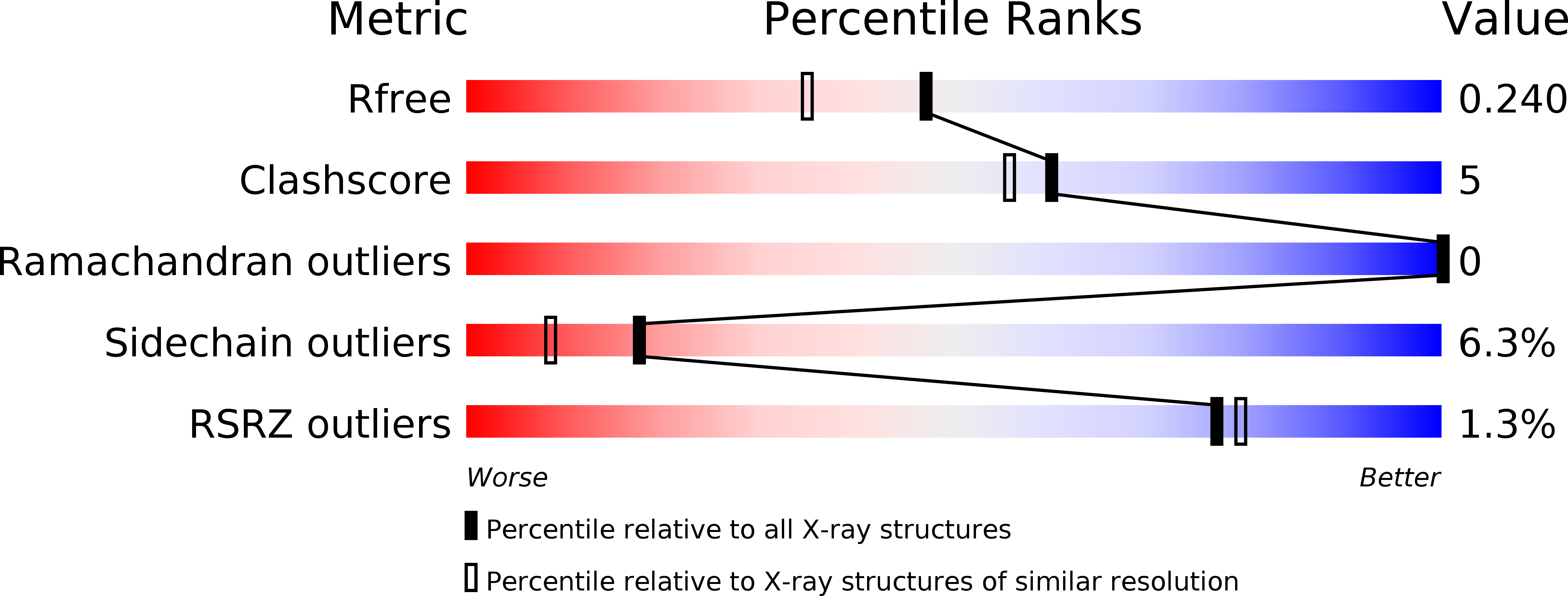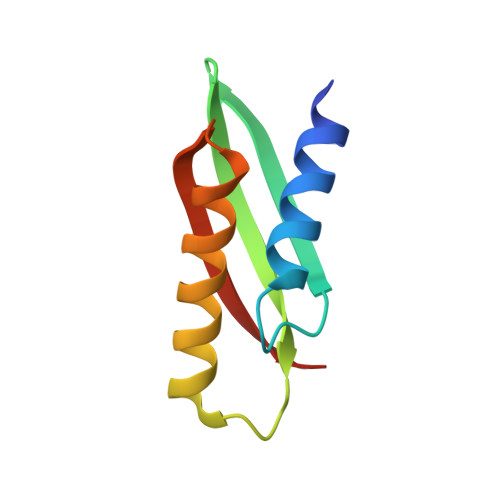Cation diffusion facilitators transport initiation and regulation is mediated by cation induced conformational changes of the cytoplasmic domain
Zeytuni, N., Uebe, R., Maes, M., Davidov, G., Baram, M., Raschdorf, O., Nadav-Tsubery, M., Kolusheva, S., Bitton, R., Goobes, G., Friedler, A., Miller, Y., Schuler, D., Zarivach, R.(2014) PLoS One 9: e92141-e92141
- PubMed: 24658343
- DOI: https://doi.org/10.1371/journal.pone.0092141
- Primary Citation of Related Structures:
3W5X, 3W5Y, 3W5Z, 3W60, 3W61, 3W62, 3W63, 3W64, 3W65, 3W66, 3W8P - PubMed Abstract:
Cation diffusion facilitators (CDF) are part of a highly conserved protein family that maintains cellular divalent cation homeostasis in all domains of life. CDF's were shown to be involved in several human diseases, such as Type-II diabetes and neurodegenerative diseases. In this work, we employed a multi-disciplinary approach to study the activation mechanism of the CDF protein family. For this we used MamM, one of the main ion transporters of magnetosomes--bacterial organelles that enable magnetotactic bacteria to orientate along geomagnetic fields. Our results reveal that the cytosolic domain of MamM forms a stable dimer that undergoes distinct conformational changes upon divalent cation binding. MamM conformational change is associated with three metal binding sites that were identified and characterized. Altogether, our results provide a novel auto-regulation mode of action model in which the cytosolic domain's conformational changes upon ligand binding allows the priming of the CDF into its transport mode.
Organizational Affiliation:
Department of Life Sciences, Ben Gurion University of the Negev, Beer-Sheva, Israel; National Institute for Biotechnology in the Negev, Ben Gurion University of the Negev, Beer-Sheva, Israel.















